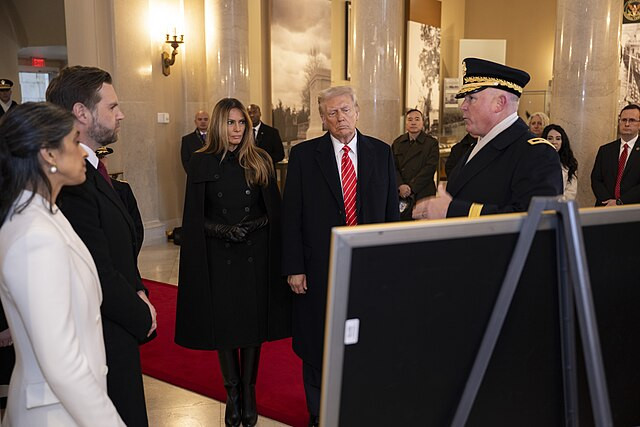The Pentagon is set to deploy up to 1,500 active-duty troops to the U.S.-Mexico border in the coming days, marking a significant escalation in President Donald Trump's efforts to address illegal immigration and secure the southern border. This move comes on the heels of executive orders Trump signed shortly after taking office, signaling a sharp focus on immigration enforcement as a central tenet of his administration.
"This is something President Trump campaigned on," White House Press Secretary Karoline Leavitt said on Wednesday. "The American people have been waiting for such a time as this-for our Department of Defense to actually implement homeland security seriously. This is a No. 1 priority for the American people."
The newly deployed troops will join the approximately 2,500 National Guard and Reserve forces already stationed along the nearly 2,000-mile border. While their specific roles remain under discussion, officials indicated that the soldiers would primarily assist Border Patrol agents with logistics, transportation, and the construction of barriers.
The deployment reflects Trump's broader strategy to bolster federal resources at the southern border, where federal agencies have long been strained by a high volume of migrants and limited infrastructure. "We've been told to treat this like a national emergency because it's been declared a national emergency," a defense official said.
While the soldiers will not perform law enforcement duties under current federal law, including the Posse Comitatus Act, Trump has directed officials to evaluate whether the Insurrection Act of 1807 should be invoked. If enacted, this law would permit the use of military personnel in civilian law enforcement roles, a step not taken since the 1992 Los Angeles riots.
The current deployment plan will also reinforce logistical support for U.S. Customs and Border Protection. Military personnel are expected to assist with tasks such as intelligence analysis, operational readiness, and air operations. The Pentagon has already instructed U.S. Transportation Command to prepare military aircraft for potential migrant repatriation flights.
Among the first wave of troops will be 500 Marines from Camp Pendleton and the 1st Marine Division, who are expected to arrive at the border imminently. Acting as a rapid response force, the Marines will also support longer-term operations. The number of active-duty Marines could increase to as many as 2,500 in the coming weeks.
"We will begin the process of returning millions and millions of criminal aliens back to the places in which they came," Trump said during his inaugural address. His executive orders also outlined plans for the military to assist the Department of Homeland Security with detention space, transportation, and other logistical support.
The deployment coincides with a decline in daily migrant crossings, which currently range from 1,100 to 1,300 individuals, according to a Homeland Security official. The administration hopes that increasing military support at the border will allow Immigration and Customs Enforcement (ICE) to redirect its focus to interior operations, targeting undocumented individuals already residing in the U.S.
Critics have raised concerns about the potential strain on military resources and the legality of deploying active-duty troops for roles traditionally handled by civilian agencies. The Congressional Research Service has noted that legal restrictions, including the Posse Comitatus Act, explicitly limit military involvement in domestic law enforcement activities such as arrests or searches.
Despite these limitations, the Trump administration has indicated that further expansions to the military's role could be forthcoming. Federal officials have highlighted the need for additional support as the southern border continues to face challenges related to migration, drug trafficking, and transnational crime.
The current deployment builds on past use of the military at the border. In 2018, more than 7,000 active-duty troops were dispatched to Texas, Arizona, and California in response to a caravan of migrants traveling through Mexico. During that operation, military personnel erected vehicle barriers, provided medical care, and supported transportation efforts but avoided direct law enforcement activities.






